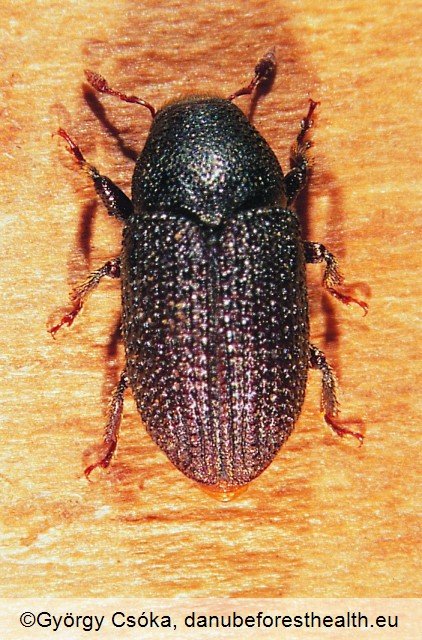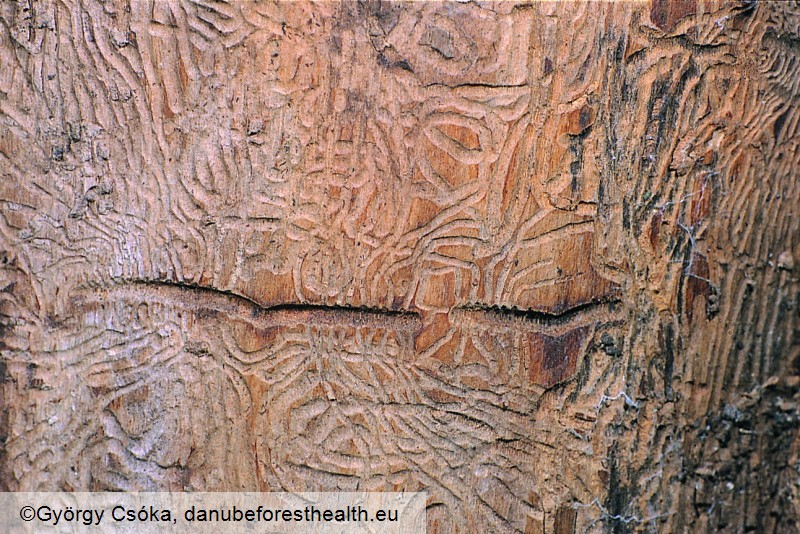Animalia
Large ash bark beetle
Hylesinus crenatus
Maarten de Groot
|
|

Fig. 1. Adult of Hylesinus crenatus

Fig. 2. Larvae of Hylesinus crenatus

Fig. 3. Galleries of Hylesinus crenatus

Fig. 4. Dieback of trees caused by Hylesinus crenatus
DETECTION PERIOD:
March-May (flight period), whole year (damage)
DESCRIPTION:
Adults are relatively large black bark beetles (4-6 mm). The adults are making a characteristic V-shaped gallery system in the cambium with each branch is 3 mm wide and 5-6 cm long. The larval tunnels are perpendicular of the maternal tunnels. The adults are hibernating in overwintering galleries which give the characteristic galls on the bark.
HABITAT:
The main host of this species are ash species (Fraxinus spp.).
STATUS:
Occurs in all countries in the refocus area (Austria, Croatia, Hungary, Serbia and Slovenia). It occurs everywhere but is less common as H. fraxini.
IMPACT:
Larvae of the ash bark beetle are feeding on cambium of the trees. When in high populations the species can cause dieback of trees. However, it attacks mainly already weakened trees. It attacks ash trees of all age classes.
SIMILAR SPECIES:
Can be confused with other bark beetles on ashes like H. fraxini and H. oleiperda. The adult is largest of the ash bark beetles. The gallery system is similar to H. fraxini, but is broader and shorter. Damage of diseases causing dieback look superficially similar as H. fraxini, but when checking under the bark there are no gallery system.
|